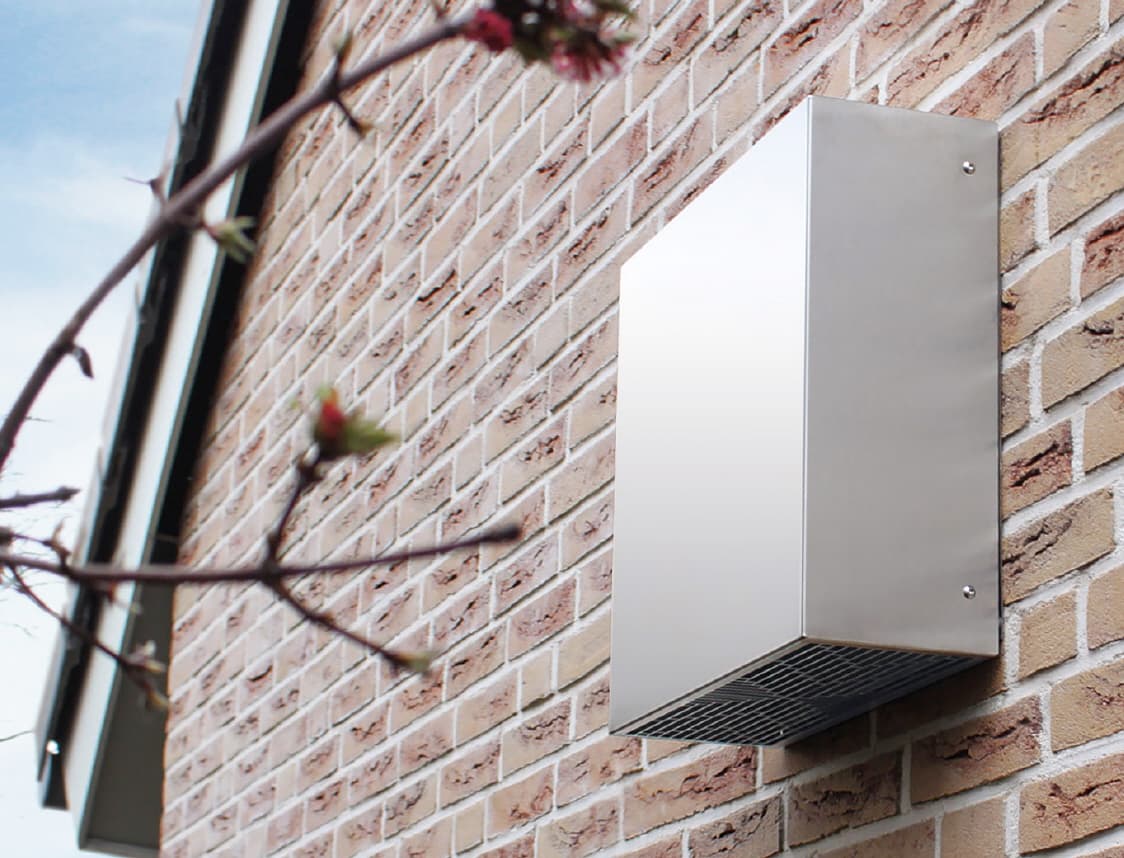Ceiling Hood With External Motor

Most ceiling hoods are unable to be flush fitted into the ceiling without creating a housing for it to sit in. This can be referred to as a bulkhead or drop down box. Basically, a false ceiling is created to fit the hood in – usually above the island section of the kitchen.
Some ceiling hoods can fit between joists (such as the Aria) but most installations end up having to box it in. This is still preferable to having a traditional island hood right in the eyeline.
(the Aria Ceiling hood by ViandPro is small enough to fit between joists as long as they run the same way as the hob)
As you will probably be committed to building a box anyway, one way of making it as slim as possible to pick a ceiling hood where the motor is fitted away from the body of the hood. We refer to these as ceiling hoods with inline motor. It’s a great way to reduce the height of the hood so it encroaches into the room as little as possible. The ViandPro range with inline motors are as slim as 115 – 180m – making the dropdown from the ceiling 200mm maximum – so well above eyeline.
A much overlooked option is to use an external motor – and for a modest additional cost you get a superb solution. By taking the motor outside the property you are removing the noise from the kitchen almost completely. The external motor is more powerful so extracts more air, smells and grease than a standard ceiling hood. The only fiddly installation in the joists is running the ducting and 8m power cable (included) making installation much easier and quicker – therefore cheaper! The weatherproof steel box sits on the outside wall, simply connect the ducting and power to it.
Performance of Ceiling Hoods VS Island hoods
It is a fact that the distance between the hob and the hood affects performance. An island hood 750mm above the hob will perform better than a ceiling hood 1600mm away.
It’s an aesthetic choice to install a ceiling hood to keep the room as open plan as possible, so if that’s the look you want, then you will accept the slight performance decrease of using a kitchen ceiling extractor.
There are a few ways to ensure the hood is efficient as possible.
1 – Use 150mm ducting. The larger the ducting, the less air resistance there is. This puts less pressure on the motor, increasing efficiency and decreasing noise. 5” or less will reduce the life of the hood.
2 – Avoid Bends. 90° are the enemy and some studies suggest they are comparable to adding 1m of straight ducting the hood. Keep the run as straight as possible. Some duct systems have extra channels in the bends which help with the flow of air around cormers.
3 – Use smooth rigid ducting. Avoid flexible ducting. If you do use it pull it as taut as possible. The ridges and grooves make the flow of air extremely poor.
4 – Keep the filters clean. Regularly wash the grease filters with soapy water of a gentle dishwasher cycle. The anti grease in the detergents help keep them performing efficiently.
5 – Switch on the hood 10 min before cooking and leave it 10 min after. A mistake people make is to simply put the ceiling hood on partway through cooking when they notice it’s quite a steamy session. The air currents and direction flow have already established and it’s difficult to effectively control them retrospectively. By encouraging the air to the hood from the start of cooking you will have much more success with the extracting the odours and steam.
6 – Use an external motor. External motors are usually more powerful as they aren’t constricted by size. You can set it on its highest setting and not be bothered by the noise as it’s outside. You’ll still be able to converse in the kitchen as the only noise from the hood will be the movement of air.
7 – Move the ceiling hood closer to the hob. If performance rather than look is important, the drop down housing to build can be a bit lower than you were planning. You could make it a feature with lighting and shelves and place the hood a bit lower, but still well above eyeline.
